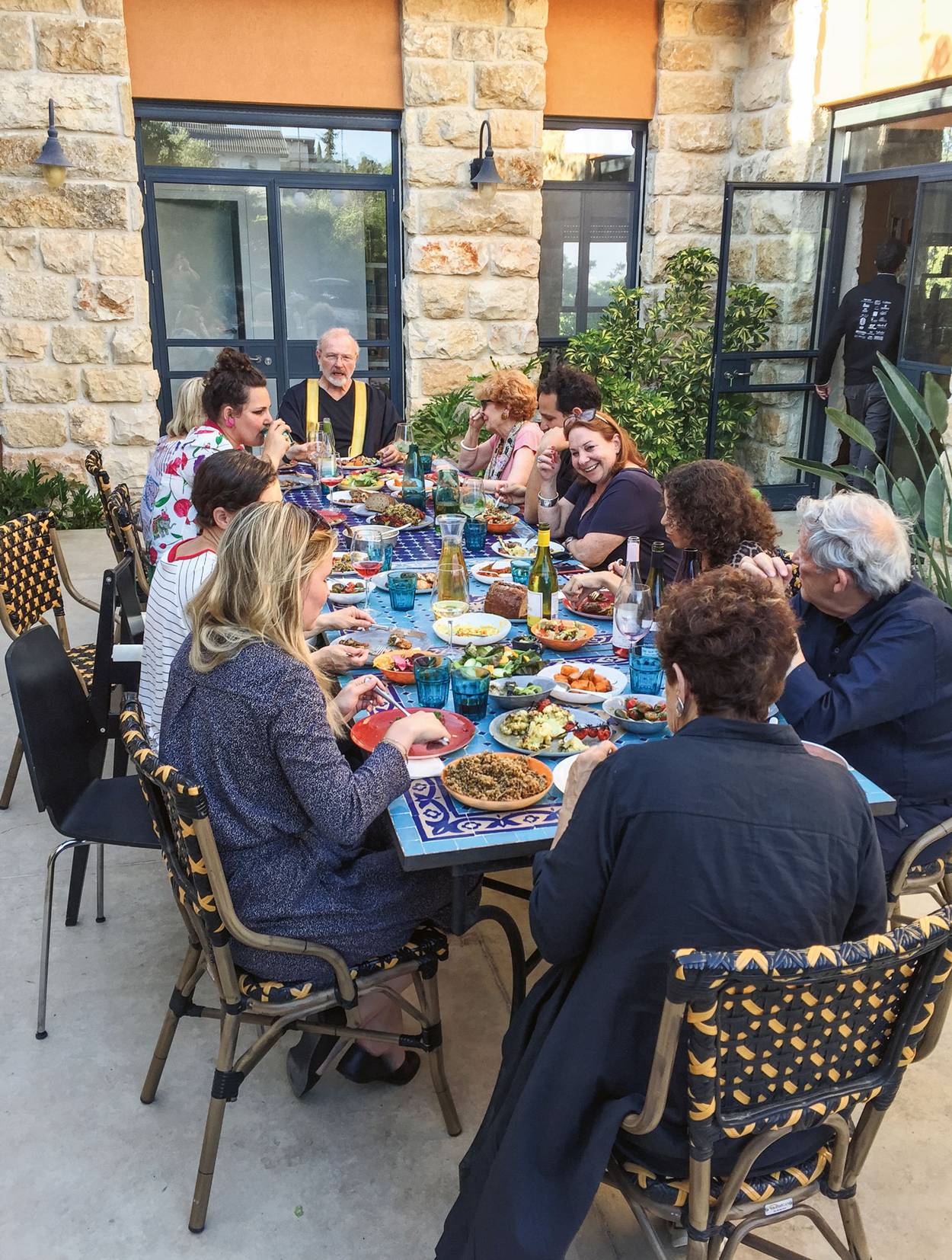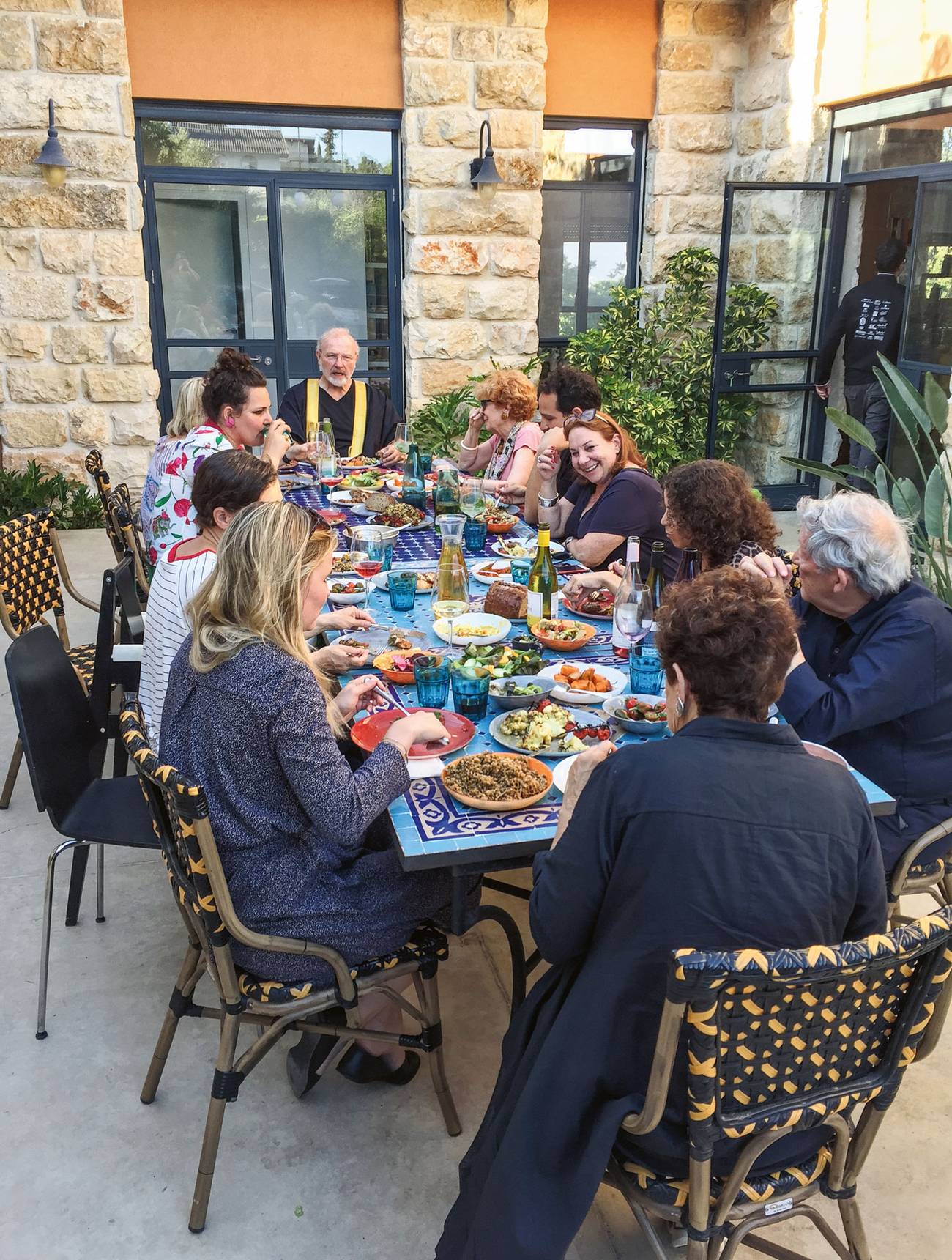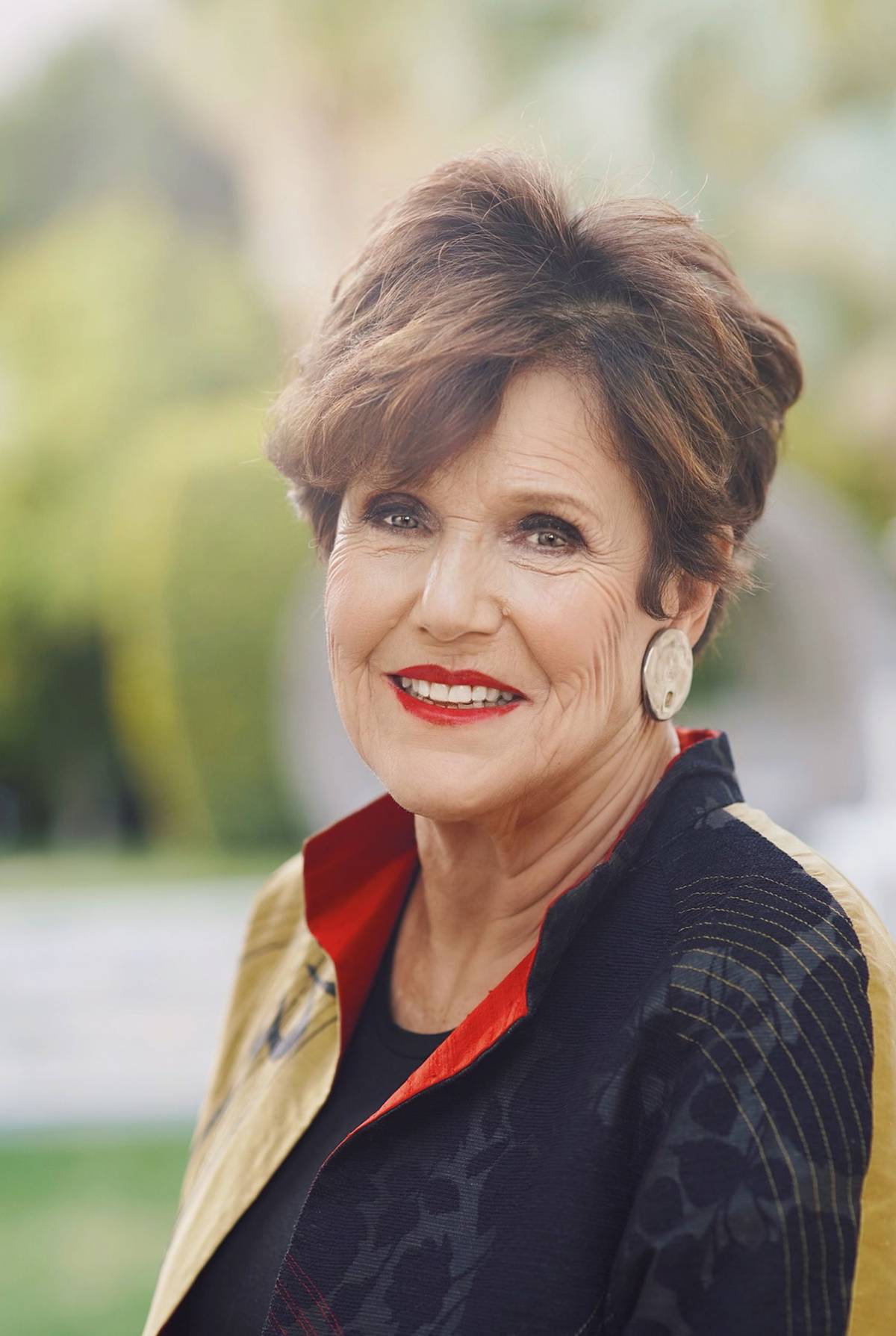A Birthday Party in Israel
In an excerpt from her new memoir, Joan Nathan remembers the culinary delights from a celebratory family trip

Courtesy Joan Nathan

Courtesy Joan Nathan

Courtesy Joan Nathan

Courtesy Joan Nathan
Then we saw our El Al plane, a Boeing Dreamliner that eclipsed our domestic planes. The menu, curated by an Israeli chef, is exciting. Starters alone: grilled artichoke with chimichurri; Romanian steak with thyme, eggplant and olive oil; colorful carrots; Kalamata olives; cherry tomato, radish and chestnut salad with spicy lemon-chili dressing. The man next to me takes photos of what he eats because, he says, he wants to show his wife he made the right selection; she helped him choose. The stewardess says Israeli food is the best in the world. Maybe, like in the States, food has taken over in a world where politics is so depressing. Sadly, the food sounded better than it tasted. But the ingredients were all Israeli.
—Travel journal, June 18, 2019
In June 2019, we took our children, their spouses, and our grandchildren to Israel for Allan’s seventy-fourth birthday. I could understand why he wanted to celebrate this birthday, but not why he wanted to have this special celebration for his seventy-fourth and not wait for his seventy-fifth, but I didn’t argue. Now, of course, I am so glad we did. After all, Allan and I met in Israel and had been there many times through the years, trying to show our children what it meant to us and what we hoped it will mean to them.
Since Allan wanted to spend his birthday photographing Makhtesh Ramon, the largest erosion crater in the world, we rented a car and headed toward the Negev. On the way, we stopped for lunch at Kornmehl Farm, which I had visited on another trip. The goat farm makes great cheese, and the Kornmehls, who raised their children in a trailer on the site, make delicious salads and other food for weary travelers. (While we were there, an entire team of Israeli police investigating the Netanyahus came by for lunch.) The outdoor restaurant in the middle of the Negev desert uses Ikea yellow and orange triangular tarpaulins to shelter the nomadic tables from the heat. Just down the hill is the Ashalim Power Station, with the world’s tallest solar tower; elsewhere in the Negev, drip irrigation allows seemingly miles of cherry tomatoes and other crops to grow.
In Mitzpe Ramon, the town originally started for building the desert highway Road 40, we took a Jeep tour with a guide to learn about the ancient trade route. The Nabateans who built Petra were the only ones who were able to cross the Arabian Desert, knowing its secrets, including sources of water and how to preserve it by using dams, plastered cisterns, and conduits. Beginning in the seventh century BCE, a network of major land and sea trading routes connected the Negev with eastern and southern sources of luxury goods, including incense, spices, precious stones, and textiles—and also slaves.
Our guide also showed us the rock formations with layers of porcelain (whitish), flint (black), and sandstone (red), making me curious to look more closely at the stones of Martha’s Vineyard. We learned, too, that the acacia, a shade tree found in the desert, was also the wood from which the Ark of the Ten Commandments was made.
From the Negev we drove to Jerusalem, where we met our daughter for dinner and then saw Nabucco, the Verdi opera set in the Holy City. Not only was it exciting to be outside in the amphitheater, but to see an opera performed with the Jerusalem Symphony Orchestra and Jewish singers from so many countries of the world was a thrill.

Hope Leigh
The next day, we visited the Mahane Yehuda Market—how it has been yuppified!—with its food tours, fruit bars, great cuts of meat, and Georgian fast-food restaurants. Thank goodness, the Kurdish Morduch and Azura restaurants of yesteryear still serve their homey and ancient kubbeh soups, my favorite being the Aramaic one with lemon and hardy greens, and semolina and/or bulgur dumplings filled with meat. For me this is real comfort food, probably still made each Friday by Kurdish, Iraqi, and Iranian mothers, and grandmothers. (See my Foods of Israel Today for recipes.) Later, our son, David, and his wife, Liv, joined us. We swam at our hotel, Inbal, and then walked to the Western Wall, where we greeted the Sabbath.
Liv and I put notes in the wall, and we all walked around the reconstructed Jewish Quarter, dating from the time of King Solomon’s Temple. The next day, we went to the Ethiopian Abyssinian Church, which I had visited in 1970, then to the Old City and the Church of the Holy Sepulchre, where the Ethiopian monks still live in very basic conditions.
From Jerusalem we drove north to Rosh Pina, founded in 1882 by farmers from Romania who knew nothing about tilling this land in the Galilee. We settled in at Villa Pinai, a fabulous home that Daniela and Talia found online.
Then the preparations for Allan’s birthday party began. David, Liv, and Liv’s friend Maya arrived, as did Eitan Perry, our chef for the day. Dottie and David Harman, dear friends from Jerusalem, came, as did Colette Avital and Allan’s cousin Eda Eskin. As the chef cooked, we noshed on his amazing cashew tapenade, talked, and drank David’s cocktail of arak, lemonade, and mint. Eitan made loads of salads, a mixed grill with freekeh, okra, and more. He made a tapioca pudding for dessert, along with fresh fruits and a molten chocolate birthday cake. We sat outside at a long table surrounded by stone walls. Little did we know that this would be Allan’s last birthday party, with his last birthday speech.
From “My Life in Recipes” by Joan Nathan. Copyright © 2024 by Joan Nathan. Excerpted by permission of Alfred A. Knopf, a division of Penguin Random House LLC. All rights reserved.
Please join Tablet for an exclusive Zoom event with Joan Nathan on Monday, May 6, at 7 p.m. ET. Click here to register, or for more information.
Joan Nathan is Tablet Magazine’s food columnist and the author of 10 cookbooks including King Solomon’s Table: a Culinary Exploration of Jewish Cooking from Around the World.